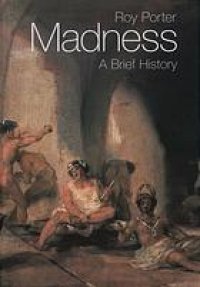A history of "madness" offers readers a history of mental illness and its treatment. The book reveals radically different perceptions of madness and approaches to its treatment, from antiquity to the present day. The author explores what we really mean by 'madness', covering an enormous range of topics from electric shock therapy to sexual deviancy, witches to creative geniuses, and psychoanalysis to Prozac. The origins of current debates about how we define and deal with insanity are examined through eyewitness accounts of writers, artists, those treating patients, and the mad themselves from holes drilled in five-thousand-year-old skulls to the latest in modern psychotropic drugs. Looking back on his confinement to Bethlem, Restoration playwright Nathaniel Lee declared: "They called me mad, and I called them mad, and damn them, they outvoted me." As the author shows in this work, thinking about who qualifies as insane, what causes mental illness, and how such illness should be treated has varied wildly throughout recorded history, sometimes veering dangerously close to the arbitrariness Lee describes and often encompassing cures considerably worse than the illness itself. Drawing upon eyewitness accounts of doctors, writers, artists, and the mad themselves, the author tells the story of our changing notions of insanity and of the treatments for mental illness that have been employed from antiquity to the present day. Beginning with 5,000-year-old skulls with tiny holes bored in them (to allow demons to escape), through conceptions of madness as an acute phase in the trial of souls, as an imbalance of "the humours," as the "divine fury" of creative genius, as sanity itself in a world gone mad, or as the malfunctioning of brain chemistry, he shows the many ways madness has been perceived and misperceived in every historical period. He also takes us on a fascinating round of treatments, ranging from exorcism and therapeutic terror, including immersion in a tub of eels, to the first asylums, the anti-restraint movement, shock therapy, the birth of psychoanalysis, and the current use of psychotropic drugs. Throughout, this book offers a balanced view, showing both the humane attempts to help the insane as well as the ridiculous and often cruel misunderstanding that have bedeviled our efforts to heal the mind of its myriad afflictions. Read more...
Abstract: What has it been like to be insane? How have the mad been treated? Is madness real or is it just a label? This fascinating story of madness reveals the radically different perceptions of madness and approaches to its treatment, from antiquity to the present day. Read more...
Download the book Madness : a brief history for free or read online
Continue reading on any device:


